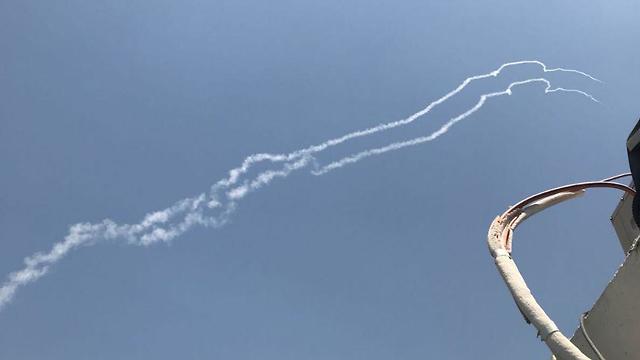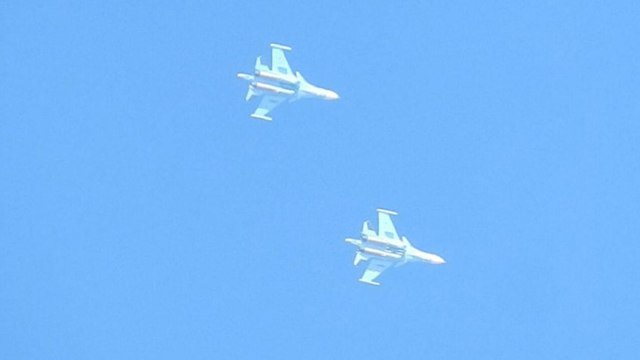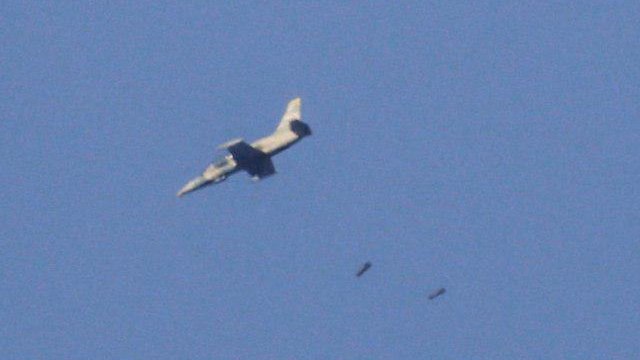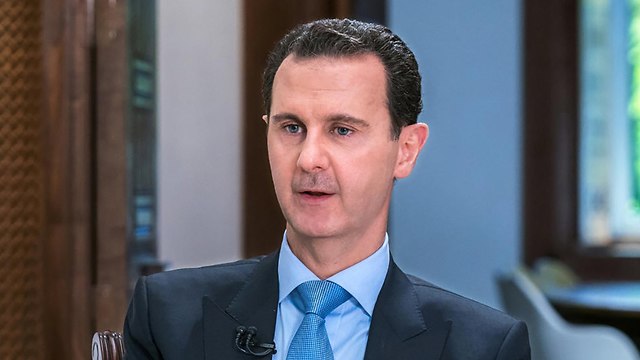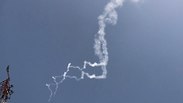
Syrian fighter jet: A navigational error with no hidden agenda
Op-ed: Even in its best days in the 1990s, the Syrian air force was not the sharpest pencil in the Arab military box. All signs indicate that the Syrian plane was to attack an ISIS enclave, but a navigational mistake brought him into Israeli territory.
The downing of the Syrian Sukhoi plane was the result of a navigation mistake, and there was no hidden intention to attack the Israeli Golan Heights.
All the signs point to the pilot's plan to attack the so-called ISIS enclave—a militia called The Khalid ibn al-Walid Army—in the border triangle of Israel, Syria and Jordan, adjacent to The Yarmuk River.
The pilot apparently arrived, at a relatively low altitude, from the T-4 airport, which is about 270 kilometers from the Syrian-Israeli border on the Golan Heights.
Within minutes the plane reached the area of the planned attack at the ISIS outposts.
It is very difficult to identify the targets and even the towns in this area because of the vegetation in the deep wadis.
In any event, from the flight route, the speed of the aircraft, and the pilot's actions after the plane was hit, it can be concluded, almost undeniably, that the pilot was unable to navigate properly on the ground, causing him to fly almost 1.8 kilometers into our territory.
In accordance with Israel's consistent policy, the plane was shot down.
Israel has long been telling the Russians and the Syrians—including yesterday and again this morning—that it will not allow a violation of the 1974 Separation of Forces Agreement, and will respond immediately and with deadly results.
Any spillover, whether it is by a mortar shell or a fighter plane, will be met with a fierce Israeli response in order to protect Israel's deterrence, not only on the Golan Heights but along its borders.
In 2014, when the Air Force Patriot missiles downed a Syrian Sukhoi plane that accidentally penetrated the Golan Heights area, similar to Tuesday's incident, the plane was shot down without the pilot being warned in advance.
It can be assumed that if it was a Russian fighter plane, Israel would not be in a hurry to intercept it, but the Air Force has the ability to verify the identity of the plane without actually seeing it. And indeed, its identity was quickly verified.
The commander on duty in the "pit," the command center bunker at the Kirya base in Tel Aviv, authorized the downing of the plane.
Although the plane was being monitored for a few minutes before crossing the border, the duty commander did not need approval from higher command because it was a standing order that had been in the Air Force for years.
The question remains: How is it that despite the warnings given to the Syrians and Russians in the past few days—including the warnings given Monday evening to the visiting Russian delegation, and the warnings given Tuesday morning to Syrians, through Russian coordination mechanisms—a Syrian pilot still makes a navigational error and enters our territory?
There is a fairly simply answer to this question.
Even in their best days in the 1990s under President Hafez al-Assad, Syrian air force pilots were not the sharpest pencils in the Syrian military box in particular, and in the Arab military box in general.
During the 1982 air battles, the Israel Air Force shot down more than 80 Syrian aircraft in wholesale.
The Syrian civil war had worn out the Syrian air force, mainly because of the desertion of a number of Syrian pilots of various ranks, members of the Sunni denomination. The remaining pilots are inexperienced young men or aging commanders.
The Syrian rebels, who received shoulder-fired missiles from their Saudi, Qatari, and American patrons, ruined the fighter planes and air force helicopters that continued to fly.
Many of these aircraft were destroyed on the ground. This is precisely why the Iranians turned to Syrian President Bashar Assad, who then turned to the Russians in 2015 and asked for their aid in attacking rebels from the Russian airspace.
Putin responded, Russian pilots came through and turned the situation in Syria upside-down while saving Assad.
With that in mind, there is no reason to be surprised if a Syrian pilot does not function as he is supposed to and pays for it dearly. It is reasonable to assume that the commander of the pilot and President Assad won’t view the incident as a pretext for another skirmish with Israel.
For the Assad regime and Russia, it is important for now to control the Golan Heights in order to consolidate their control over all of Syria. Anything that can detract from this effort has to be brushed aside. The Russians are also not expected to respond since they too agree with the principle that Syria must refrain from violating the 1974 Separations Agreement in the Golan Heights.











